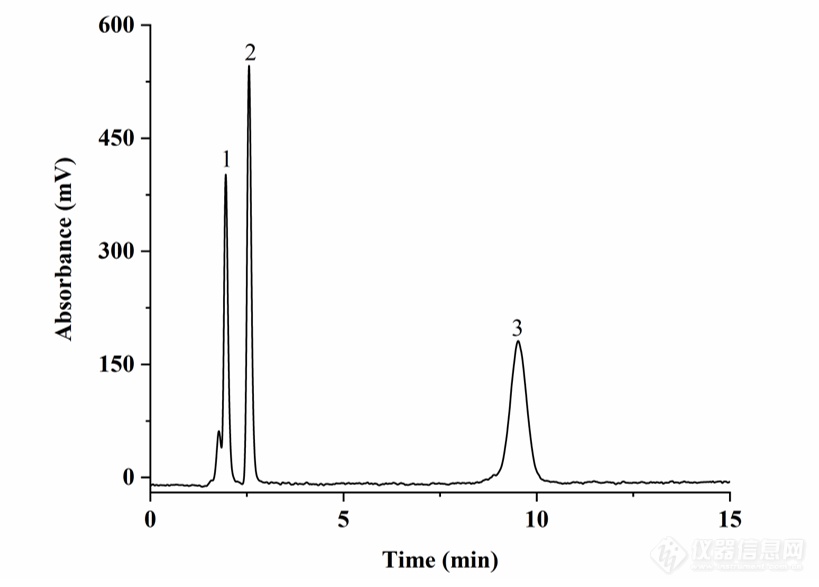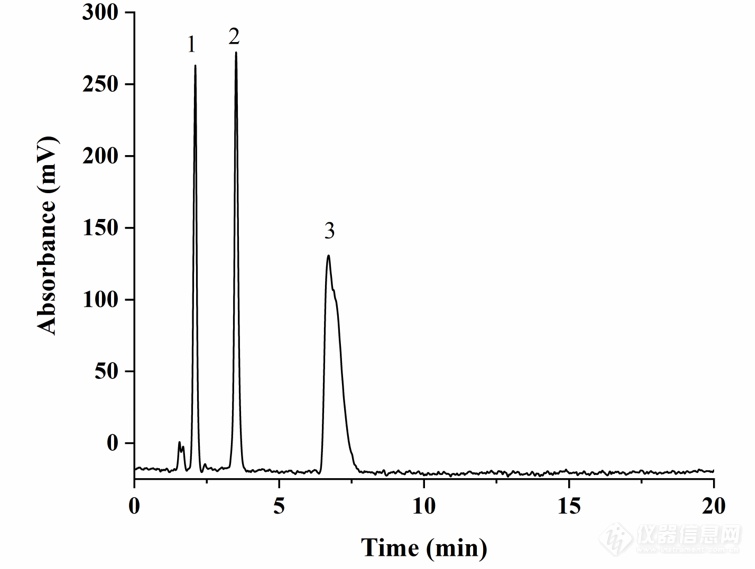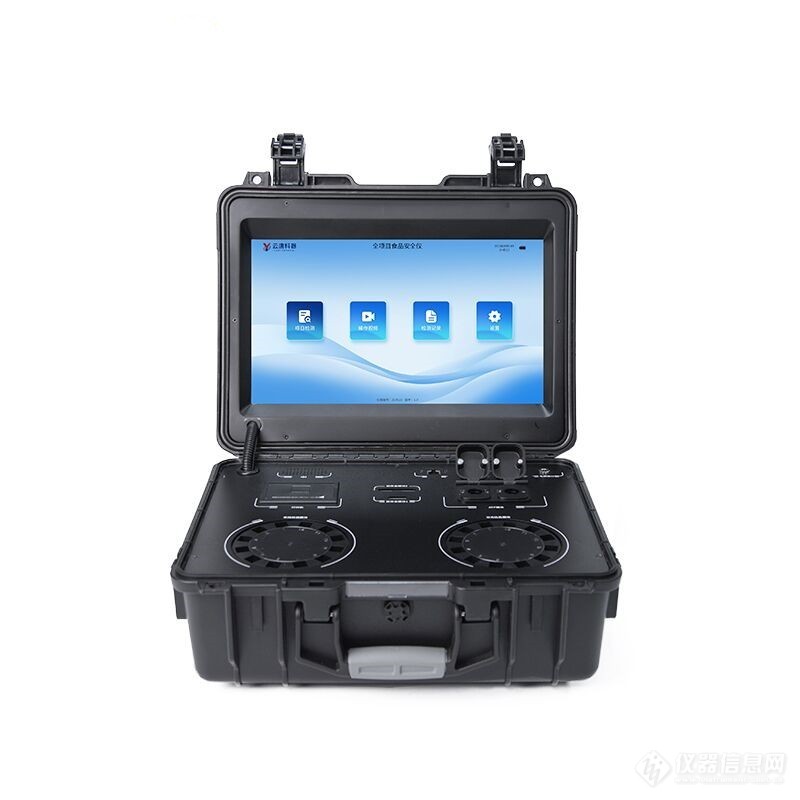四螨嗪标准走出3个峰,很可疑,求解,求升温程序
[font=仿宋_GB2312][font=仿宋_GB2312]韭菜、芹菜中毒死蜱残留分析标准物质,现征集[/font][font=仿宋_GB2312]15家定值实验室。[/font][/font][font=仿宋_GB2312]1.样品:[/font][font=仿宋_GB2312]韭菜中毒死蜱[/font][font=仿宋_GB2312]残留分析标准物质[/font][font=仿宋_GB2312],[/font][font=仿宋_GB2312]每瓶[/font][font=仿宋_GB2312]10[/font][font=仿宋_GB2312]g。[/font][font=仿宋_GB2312]芹菜中毒死蜱[/font][font=仿宋_GB2312]残留分析标准物质[/font][font=仿宋_GB2312],每瓶[/font][font=仿宋_GB2312]10g。免费邮寄。每种标准3瓶,一共9瓶标准物质。[/font][font=仿宋_GB2312]2.检测方法:NY/T761-2008蔬菜和水果中有机磷、有机氯、拟除虫菊酯和氨基甲酸酯类农药多残留的测定、GB23200.113-2018食品安全国家标准植物源性食品中208种农药及其代谢物残留量的测定[url=https://insevent.instrument.com.cn/t/Mp][color=#3333ff]气相色谱[/color][/url]-质谱联用法、[/font][font=仿宋_GB2312][/font][font=仿宋_GB2312]GB23200.121-2021食品安全国家标准植物源性食品中331种农药及其代谢物残留量的测定[url=https://insevent.instrument.com.cn/t/5p][color=#3333ff]液相色谱[/color][/url]—质谱联用法[/font][font=仿宋_GB2312]3.数据反馈日期:8月底[/font][font=仿宋_GB2312]此次发放的基体标准物质可做实验室质控样品用,所做的检测过程可写原创、拍视频等,希望大家报名参加。报名链接:[font=Roboto, &][color=#990000][url=http://instrument-vip.mikecrm.com/9qEHZXg][b]http://instrument-vip.mikecrm.com/9qEHZXg[/b][/url][/color][/font][/font]
[b][color=#ff0000]食品中四螨嗪测定[url=https://insevent.instrument.com.cn/t/Mp]gc[/url] MS(国标GB 23200.47-2016)[/color][/b][color=#ff0000][color=#000000]做[url=https://insevent.instrument.com.cn/t/bp][color=#3333ff]气质[/color][/url]也有一个月了,[/color][/color][color=#ff0000][color=#000000]因为缺人手[/color][/color][color=#ff0000][color=#000000],直接让我做[url=https://insevent.instrument.com.cn/t/Mp]gc[/url] MS,知道这个岗位不好做,前边已经走了一大批人[/color][/color][color=#ff0000][color=#000000]。想着金属已经做了一年多快两年了,[url=https://insevent.instrument.com.cn/t/Wp][color=#3333ff]原子吸收[/color][/url]和icp ms掌握的也不错了。食品金属资质也拿的差不多了。就硬着头皮换岗了。最近做四螨嗪方法开发就出现问题,和大家讨论下![/color][/color][color=#ff0000][/color][color=#ff0000]这个项目我们也做很久了,前边同事没做出来,也咨询过工程师,一直有问题,目标离子对应不上,化合物CAS号,化合物分子式,结构式都对应不上。我接手后也做过2次还是不行,也是我们知识水平不够。开过好几瓶标液,也试过各种条件。[/color][color=#ff0000][/color]标准内容[color=#ff0000][color=#000000][img=,690,259]https://ng1.17img.cn/bbsfiles/images/2018/06/201806272211582918_1632_3095449_3.png!w690x259.jpg[/img][/color][/color][color=#ff0000][img=,639,302]https://ng1.17img.cn/bbsfiles/images/2018/06/201806272226249196_9493_3095449_3.png%21w639x302.jpg[/img][/color][color=#ff0000][color=#ff0000][img=,630,404]https://ng1.17img.cn/bbsfiles/images/2018/06/201806272226231058_4521_3095449_3.png%21w630x404.jpg[/img][/color][/color][color=#ff0000][color=#ff0000][color=#ff0000][img=,659,385]https://ng1.17img.cn/bbsfiles/images/2018/06/201806272226235798_7481_3095449_3.png%21w659x385.jpg[/img][/color][/color][/color][color=#ff0000][color=#ff0000][color=#ff0000][b]这是我们做的,做了很多次都是这样,一度怀疑标液有问题。[/b][/color][/color][/color][color=#ff0000][b][color=#ff0000][b][color=#ff0000][img=,690,738]https://ng1.17img.cn/bbsfiles/images/2018/06/201806272226220983_2703_3095449_3.jpg%21w690x738.jpg[/img][/color][/b][/color][/b][/color][color=#ff0000][b]今天无意中看到实验室放着一本世界常用农药色谱-质谱图集(第五卷),随手打开一看四螨嗪,如下:[/b][/color][color=#ff0000][b][img=,690,920]https://ng1.17img.cn/bbsfiles/images/2018/06/201806272237024818_7713_3095449_3.jpg!w690x920.jpg[/img][/b][/color][color=#ff0000][b][img=,690,430]https://ng1.17img.cn/bbsfiles/images/2018/06/201806272238180558_2395_3095449_3.jpg!w690x430.jpg[/img][img=,690,247]https://ng1.17img.cn/bbsfiles/images/2018/06/201806272238137264_6236_3095449_3.jpg!w690x247.jpg[/img][/b][/color][color=#ff0000][b]一看和我们做的一模一样,兴奋,吃惊又反思良久[img]https://simg.instrument.com.cn/bbs/images/default/em09502.gif[/img][/b][/color][color=#ff0000]大家都来看下怎么回事,欢迎各位朋友讨论![/color][color=#ff0000][/color][color=#ff0000][/color]
柑橘和土壤中四螨嗪残留量的液相色谱测定法摘要: 目的 用液相色谱测定柑橘和土壤中四螨嗪的农药残留量。方法 样品用丙酮提取,干装硅胶柱净化,利用安捷伦 HPLC 1200液相色谱进行检测。结果 四螨嗪农药的检出限为0. 01 mg /kg ,土壤的添加回收浓度在0. 05 ~ 2. 03mg /kg时,平均回收率为93. 1% ~ 95. 8%,相对标准偏差为0. 30% ~ 5. 34%,柑橘的添加回收浓度在0. 05 ~ 2. 01 mg /kg 时,平均回收率为92% ~ 95. 4%,相对标准偏差为0. 33% ~ 4. 60%。
现在在做23200.47-2016的四螨嗪,为啥扫不到304,306的离子
本人系一名在校研究生,现需要采购多种农药标准品,用于科研。标准品浓度需在1000PPM以上或者固体,有意者请把标准品价格、浓度、含量,发到myou@xmu.edu.cn 或者mh_you@126.com氯氰菊酯、醚菌酯腈菌唑杀螟腈二甲戊乐灵氟虫腈乙草胺异菌脲氟丙菊酯丙溴磷异丙甲草胺丙环唑三氯杀螨醇ddv乙拌磷四氯间二甲苯氟乐灵甲拌磷乐果二嗪哝百菌清甲基毒死蜱七氯杀螟松马拉硫磷环氧七氯硫丹1丁草胺稻瘟灵异狄氏剂环氟菌胺硫丹2乙硫磷联苯菊酯甲氰菊酯三氯杀螨砜三氟氯氰菊酯氯菊酯氟氯氰菊酯氰戊菊酯溴氰菊酯三唑磷丙线磷敌敌畏甲胺磷异吸硫磷甲拌磷治螟磷内吸磷二嗪哝乙拌磷稻瘟净久效磷乐果甲基毒死蜱甲基对硫磷倍硫磷马拉硫磷杀螟松对硫磷甲基异柳磷喹硫磷稻丰散丙溴磷乙硫磷苯硫磷

[size=18px]Sil-SMA-MME[/size][size=18px]色谱柱用于磷脂[/size][size=18px]标准品[/size][size=18px]的分离分析[/size][align=left][font='times new roman'][size=20px]实验部分[/size][/font][/align][align=left][font='times new roman'][size=18px]试剂和仪器[/size][/font][/align][align=center][font='times new roman'] [/font][font='times new roman']试剂和仪器[/font][/align][align=center][img=,690,611]https://ng1.17img.cn/bbsfiles/images/2023/08/202308031647198192_4343_3237657_3.png!w690x611.jpg[/img][/align][align=left][font='times new roman'][size=18px]Sil-SMA-MME[/size][/font][font='times new roman'][size=18px]色谱柱用于磷脂标准品的分离分析[/size][/font][/align][font='times new roman'][size=16px]首先考察了[/size][/font][font='times new roman'][size=16px]Sil-SMA-MME[/size][/font][font='times new roman'][size=16px]色谱柱对[/size][/font][font='times new roman'][size=16px]不同磷脂类别的分离选择性[/size][/font][font='times new roman'][size=16px]。如图所示,[/size][/font][font='times new roman'][size=16px]流动相条件为[/size][/font][font='times new roman'][size=16px]A-B[/size][/font][font='times new roman'][size=16px]([/size][/font][font='times new roman'][size=16px]80:20[/size][/font][font='times new roman'][size=16px],[/size][/font][font='times new roman'][size=16px]v/v[/size][/font][font='times new roman'][size=16px]),其中,[/size][/font][font='times new roman'][size=16px]A[/size][/font][font='times new roman'][size=16px]相为正己烷[/size][/font][font='times new roman'][size=16px]-[/size][/font][font='times new roman'][size=16px]异丙醇[/size][/font][font='times new roman'][size=16px]-[/size][/font][font='times new roman'][size=16px]水[/size][/font][font='times new roman'][size=16px]-[/size][/font][font='times new roman'][size=16px]冰乙酸[/size][/font][font='times new roman'][size=16px]-[/size][/font][font='times new roman'][size=16px]三乙胺([/size][/font][font='times new roman'][size=16px]5[/size][/font][font='times new roman'][size=16px]:[/size][/font][font='times new roman'][size=16px]81[/size][/font][font='times new roman'][size=16px]:[/size][/font][font='times new roman'][size=16px]14[/size][/font][font='times new roman'][size=16px]:[/size][/font][font='times new roman'][size=16px]1.5[/size][/font][font='times new roman'][size=16px]:[/size][/font][font='times new roman'][size=16px]0.08[/size][/font][font='times new roman'][size=16px],[/size][/font][font='times new roman'][size=16px]v/v/v/v/v[/size][/font][font='times new roman'][size=16px]),[/size][/font][font='times new roman'][size=16px]B[/size][/font][font='times new roman'][size=16px]相为甲醇。[/size][/font][font='times new roman'][size=16px]DPPS[/size][/font][font='times new roman'][size=16px]、[/size][/font][font='times new roman'][size=16px]D[/size][/font][font='times new roman'][size=16px]PPE[/size][/font][font='times new roman'][size=16px]和[/size][/font][font='times new roman'][size=16px]D[/size][/font][font='times new roman'][size=16px]O[/size][/font][font='times new roman'][size=16px]P[/size][/font][font='times new roman'][size=16px]C[/size][/font][font='times new roman'][size=16px]可实现基线分离[/size][/font][font='times new roman'][size=16px],制备的[/size][/font][font='times new roman'][size=16px]Sil-SMA-MME[/size][/font][font='times new roman'][size=16px]色谱柱[/size][/font][font='times new roman'][size=16px]对[/size][/font][font='times new roman'][size=16px]三种不同类别的磷脂展示了良好的分离选择性[/size][/font][font='times new roman'][size=16px]。[/size][/font][align=center][img=,690,494]https://ng1.17img.cn/bbsfiles/images/2023/08/202308031646107058_41_3237657_3.png!w690x494.jpg[/img][/align][align=center][img]" style="max-width: 100% max-height: 100% [/img][/align][align=center][font='times new roman']图[/font][font='times new roman']1[/font][font='times new roman'] [/font][font='times new roman'] [/font][font='times new roman']混磷脂类别在[/font][font='times new roman']Sil-SMA-MME[/font][font='times new roman']色谱柱中的分离谱图[/font][/align][align=center][font='times new roman']色谱条件:流动相为[/font][font='times new roman']A-B[/font][font='times new roman']([/font][font='times new roman']80:20[/font][font='times new roman'],[/font][font='times new roman']v/v[/font][font='times new roman']),其中[/font][font='times new roman']A[/font][font='times new roman']相为正己烷[/font][font='times new roman']-[/font][font='times new roman']异丙醇[/font][font='times new roman']-[/font][font='times new roman']水[/font][font='times new roman']-[/font][font='times new roman']冰乙酸[/font][font='times new roman']-[/font][font='times new roman']三乙胺([/font][font='times new roman']5:81:14:1.5:0.08[/font][font='times new roman'],[/font][font='times new roman']v/v/v/v/v[/font][font='times new roman']),[/font][font='times new roman']B[/font][font='times new roman']相为甲醇;流速,[/font][font='times new roman']1.0 mL/min[/font][font='times new roman'];[/font][font='times new roman']ELSD[/font][font='times new roman']检测[/font][/align][align=center][font='times new roman']分析物:[/font][font='times new roman']1. DPPS[/font][font='times new roman'];[/font][font='times new roman']2. DPPE[/font][font='times new roman'];[/font][font='times new roman']3. DOPC[/font][/align][align=center][font='times new roman']Fig[/font][font='times new roman']1[/font][font='times new roman'] Separation chromatogram of phospholipids classes on the Sil-SMA-MME column[/font][/align][align=center][font='times new roman']Chromatographic conditions: mobile phase, A-B (80:20, v/v), phase A is [/font][font='times new roman']n[/font][font='times new roman']-hexane-isopropanol-H[/font][font='times new roman'][sub][size=13px]2[/size][/sub][/font][font='times new roman']O-glacial acetic acid-triethylamine (5:81:14:0.5:0.08, v/v/v/v/v), phase B is MeOH flow-rate, 1.0 mL/min ELSD[/font][/align][align=center][font='times new roman']Analytes: 1. DPPS 2. DPPE 3. DOPC[/font][/align][font='times new roman'][size=16px]进一步采用[/size][/font][font='times new roman'][size=16px]LysoPC[/size][/font][font='times new roman'][size=16px]、[/size][/font][font='times new roman'][size=16px]DMPC[/size][/font][font='times new roman'][size=16px]、[/size][/font][font='times new roman'][size=16px]DSPC[/size][/font][font='times new roman'][size=16px]和[/size][/font][font='times new roman'][size=16px]D[/size][/font][font='times new roman'][size=16px]PPC[/size][/font][font='times new roman'][size=16px]评价了[/size][/font][font='times new roman'][size=16px]Sil-SMA-MME[/size][/font][font='times new roman'][size=16px]色谱柱对不同种类[/size][/font][font='times new roman'][size=16px]P[/size][/font][font='times new roman'][size=16px]C[/size][/font][font='times new roman'][size=16px]标准品的分离选择性。如图[/size][/font][font='times new roman'][size=16px]4[/size][/font][font='times new roman'][size=16px]-2[/size][/font][font='times new roman'][size=16px],流动相条件为[/size][/font][font='times new roman'][size=16px]A[/size][/font][font='times new roman'][size=16px]-[/size][/font][font='times new roman'][size=16px]B[/size][/font][font='times new roman'][size=16px]([/size][/font][font='times new roman'][size=16px]25[/size][/font][font='times new roman'][size=16px]:[/size][/font][font='times new roman'][size=16px]75[/size][/font][font='times new roman'][size=16px],[/size][/font][font='times new roman'][size=16px]v/v[/size][/font][font='times new roman'][size=16px]),[/size][/font][font='times new roman'][size=16px]其中[/size][/font][font='times new roman'][size=16px]A[/size][/font][font='times new roman'][size=16px]相为水,[/size][/font][font='times new roman'][size=16px]B[/size][/font][font='times new roman'][size=16px]相为甲醇[/size][/font][font='times new roman'][size=16px]-[/size][/font][font='times new roman'][size=16px]乙腈[/size][/font][font='times new roman'][size=16px]([/size][/font][font='times new roman'][size=16px]8[/size][/font][font='times new roman'][size=16px]:[/size][/font][font='times new roman'][size=16px]1[/size][/font][font='times new roman'][size=16px],[/size][/font][font='times new roman'][size=16px]v/v[/size][/font][font='times new roman'][size=16px]),在[/size][/font][font='times new roman'][size=16px]1[/size][/font][font='times new roman'][size=16px]0 [/size][/font][font='times new roman'][size=16px]min[/size][/font][font='times new roman'][size=16px]之内,具有不同酰基侧链的四种物质实现了基线分离。以上结果显示,[/size][/font][font='times new roman'][size=16px]Sil-SMA-MME[/size][/font][font='times new roman'][size=16px]色谱柱可以同时实现磷脂类别和种类的分离分析。[/size][/font][align=center][img=,690,547]https://ng1.17img.cn/bbsfiles/images/2023/08/202308031646254151_3136_3237657_3.png!w690x547.jpg[/img][/align][align=center][img]" style="max-width: 100% max-height: 100% [/img][/align][align=center][font='times new roman']图[/font][font='times new roman']2[/font][font='times new roman'] [/font][font='times new roman']混[/font][font='times new roman']PC[/font][font='times new roman']在[/font][font='times new roman']Sil-SMA-MME[/font][font='times new roman']色谱柱中的分离谱图[/font][/align][align=center][font='times new roman']色谱条件:流动相为[/font][font='times new roman']A-B[/font][font='times new roman']([/font][font='times new roman']25:75[/font][font='times new roman'],[/font][font='times new roman']v/v[/font][font='times new roman']),其中[/font][font='times new roman']A[/font][font='times new roman']相为水,[/font][font='times new roman']B[/font][font='times new roman']相为甲醇[/font][font='times new roman']-[/font][font='times new roman']乙腈([/font][font='times new roman']8:1[/font][font='times new roman'],[/font][font='times new roman']v/v[/font][font='times new roman']);流速,[/font][font='times new roman']1.0 mL/min[/font][font='times new roman'];[/font][font='times new roman']ELSD[/font][font='times new roman']检测[/font][/align][align=center][font='times new roman']分析物:[/font][font='times new roman']1. [/font][font='times new roman']LysoPC[/font][font='times new roman'];[/font][font='times new roman']2. DMPC[/font][font='times new roman'];[/font][font='times new roman']3. DSPC[/font][font='times new roman'];[/font][font='times new roman']4. DPPC[/font][/align][align=center][font='times new roman']Fig[/font][font='times new roman']2[/font][font='times new roman'] Separation chromatogram of phosphatidylcholines on the Sil-SMA-MME column[/font][/align][align=center][font='times new roman']Chromatographic conditions: mobile phase, A-B[/font][font='times new roman'] [/font][font='times new roman'](25:[/font][font='times new roman']75,v[/font][font='times new roman']/v), phase A is H[/font][font='times new roman'][sub][size=13px]2[/size][/sub][/font][font='times new roman']O, phase B is MeOH-ACN (8:1,v/v) flow[/font][font='times new roman'] [/font][font='times new roman']rate, 1.0 mL/min ELSD[/font][/align][align=center][font='times new roman']Analytes: 1. [/font][font='times new roman']LysoPC[/font][font='times new roman'] 2. DMPC 3. DSPC 4. DPPC[/font][/align]
[font=宋体][size=3]百灵威整合国际资源为烟草行业提供品类齐全的烟草成分分析标准品。产品涵盖烟草分析所用到的各类代谢物、衍生物、农药及香精香料标准品。可以满足烟草行业各类分析实验需求。[/size][/font]

[align=left][font='times new roman'][size=18px]S[/size][/font][font='times new roman'][size=18px]il[/size][/font][font='times new roman'][size=18px]-P-C12[/size][/font][font='times new roman'][size=18px]色谱柱用于磷脂的分离分析[/size][/font][/align][align=left][font='times new roman'][size=18px]S[/size][/font][font='times new roman'][size=18px]il[/size][/font][font='times new roman'][size=18px]-P-C12[/size][/font][font='times new roman'][size=18px]色谱柱用于磷脂标准品的分离分析[/size][/font][/align][font='times new roman'][size=16px]首先考察了[/size][/font][font='times new roman'][size=16px]Sil-[/size][/font][font='times new roman'][size=16px]P[/size][/font][font='times new roman'][size=16px]-[/size][/font][font='times new roman'][size=16px]C12[/size][/font][font='times new roman'][size=16px]色谱柱对[/size][/font][font='times new roman'][size=16px]不同[/size][/font][font='times new roman'][size=16px]磷脂[/size][/font][font='times new roman'][size=16px]类别[/size][/font][font='times new roman'][size=16px]的分离选择性。如图所示,[/size][/font][font='times new roman'][size=16px]流动相条件为甲醇[/size][/font][font='times new roman'][size=16px]-[/size][/font][font='times new roman'][size=16px]水([/size][/font][font='times new roman'][size=16px]90[/size][/font][font='times new roman'][size=16px]:[/size][/font][font='times new roman'][size=16px]10[/size][/font][font='times new roman'][size=16px],[/size][/font][font='times new roman'][size=16px]v/v[/size][/font][font='times new roman'][size=16px])[/size][/font][font='times new roman'][size=16px],[/size][/font][font='times new roman'][size=16px]P[/size][/font][font='times new roman'][size=16px]G[/size][/font][font='times new roman'][size=16px]、[/size][/font][font='times new roman'][size=16px]DPPC[/size][/font][font='times new roman'][size=16px]和[/size][/font][font='times new roman'][size=16px]DO[/size][/font][font='times new roman'][size=16px]PE[/size][/font][font='times new roman'][size=16px]可实现基线分离[/size][/font][font='times new roman'][size=16px],[/size][/font][font='times new roman'][size=16px]并且显示了良好的分离选择性[/size][/font][font='times new roman'][size=16px]。[/size][/font][align=center][img=,690,520]https://ng1.17img.cn/bbsfiles/images/2023/09/202309041624558417_9800_3237657_3.png!w690x520.jpg[/img][/align][align=center][img]" style="max-width: 100% max-height: 100% [/img][/align][align=center][font='times new roman']混磷脂类别在[/font][font='times new roman']Sil-P-C12[/font][font='times new roman']色谱柱中的分离谱图[/font][/align][align=center][font='times new roman']色谱条件:[/font][font='times new roman']流动相为甲醇[/font][font='times new roman']-[/font][font='times new roman']水([/font][font='times new roman']90:10[/font][font='times new roman'],[/font][font='times new roman']v/v[/font][font='times new roman'])[/font][font='times new roman'];流速,[/font][font='times new roman']1.0 mL/min[/font][font='times new roman'];[/font][font='times new roman']ELSD[/font][font='times new roman']检测[/font][/align][align=center][font='times new roman']分析物:[/font][font='times new roman']1.[/font][font='times new roman'] [/font][font='times new roman']PG[/font][font='times new roman'];[/font][font='times new roman']2. DPPC[/font][font='times new roman'];[/font][font='times new roman']3. DOPE[/font][/align][align=center][font='times new roman'] Separation chromatogram of phospholipid classes on the S[/font][font='times new roman']il[/font][font='times new roman']-P-C12 column[/font][/align][align=center][font='times new roman']Chromatographic conditions: mobile phase, MeOH-H[/font][font='times new roman'][sub][size=13px]2[/size][/sub][/font][font='times new roman']O (90:10, v/v) flow-rate, 1.0 mL/min ELSD[/font][/align][align=center][font='times new roman']Analytes: 1. PG [/font][font='times new roman'] [/font][font='times new roman']2. DPPC [/font][font='times new roman'] [/font][font='times new roman']3. DOPE[/font][/align][font='times new roman'][size=16px]进一步采用[/size][/font][font='times new roman'][size=16px]LysoPC[/size][/font][font='times new roman'][size=16px]、[/size][/font][font='times new roman'][size=16px]DMPC[/size][/font][font='times new roman'][size=16px]和[/size][/font][font='times new roman'][size=16px]DOPC[/size][/font][font='times new roman'][size=16px]考察[/size][/font][font='times new roman'][size=16px]了[/size][/font][font='times new roman'][size=16px]Sil-[/size][/font][font='times new roman'][size=16px]P-C12[/size][/font][font='times new roman'][size=16px]色谱柱对不同种类[/size][/font][font='times new roman'][size=16px]PC[/size][/font][font='times new roman'][size=16px]标准品的分离选择性。如图[/size][/font][font='times new roman'][size=16px]2[/size][/font][font='times new roman'][size=16px],流动相条件为[/size][/font][font='times new roman'][size=16px]甲醇[/size][/font][font='times new roman'][size=16px]-[/size][/font][font='times new roman'][size=16px]水([/size][/font][font='times new roman'][size=16px]77:23[/size][/font][font='times new roman'][size=16px],[/size][/font][font='times new roman'][size=16px]v/v[/size][/font][font='times new roman'][size=16px])[/size][/font][font='times new roman'][size=16px],[/size][/font][font='times new roman'][size=16px]在[/size][/font][font='times new roman'][size=16px]8[/size][/font][font='times new roman'][size=16px] min[/size][/font][font='times new roman'][size=16px]之内,具有不同酰基侧链的[/size][/font][font='times new roman'][size=16px]三[/size][/font][font='times new roman'][size=16px]种物质实现了基线分离。以上结果[/size][/font][font='times new roman'][size=16px]表明[/size][/font][font='times new roman'][size=16px],[/size][/font][font='times new roman'][size=16px]Sil-[/size][/font][font='times new roman'][size=16px]P-C12[/size][/font][font='times new roman'][size=16px]色谱[/size][/font][font='times new roman'][size=16px]柱[/size][/font][font='times new roman'][size=16px]可以实现磷脂[/size][/font][font='times new roman'][size=16px]类别和种类的分离分析[/size][/font][font='times new roman'][size=16px]。[/size][/font][align=center][img=,690,542]https://ng1.17img.cn/bbsfiles/images/2023/09/202309041625102919_6856_3237657_3.png!w690x542.jpg[/img][/align][align=center][img]" style="max-width: 100% max-height: 100% [/img][/align][align=center][font='times new roman']图[/font][font='times new roman']2[/font][font='times new roman'] [/font][font='times new roman']混[/font][font='times new roman']PC[/font][font='times new roman']在[/font][font='times new roman']Sil-SMA-MME[/font][font='times new roman']色谱柱中的分离谱图[/font][/align][align=center][font='times new roman']色谱条件:流动相为甲醇[/font][font='times new roman']-[/font][font='times new roman']水([/font][font='times new roman']77:23[/font][font='times new roman'],[/font][font='times new roman']v/v[/font][font='times new roman'])[/font][font='times new roman'];[/font][font='times new roman']流速,[/font][font='times new roman']1.0 mL/min[/font][font='times new roman'];[/font][font='times new roman']ELSD[/font][font='times new roman']检测[/font][/align][align=center][font='times new roman']分析物:[/font][font='times new roman']1. [/font][font='times new roman']LysoPC[/font][font='times new roman'];[/font][font='times new roman']2. DMPC[/font][font='times new roman'];[/font][font='times new roman']3. DOPC[/font][/align][align=center][font='times new roman']Fig.[/font][font='times new roman']2[/font][font='times new roman'] Separation chromatogram of phosphatidylcholines on the Sil-SMA-MME column[/font][/align][align=center][font='times new roman']Chromatographic conditions: mobile phase M[/font][font='times new roman']e[/font][font='times new roman']OH-H[/font][font='times new roman'][sub][size=13px]2[/size][/sub][/font][font='times new roman']O (77:23, v/v) flow-rate, 1.0 mL/min ELSD[/font][/align][align=center][font='times new roman']Analytes: 1. [/font][font='times new roman']LysoPC[/font][font='times new roman'] 2. DMPC 3. DOPC[/font][/align][align=left][font='times new roman'][size=18px]S[/size][/font][font='times new roman'][size=18px]il[/size][/font][font='times new roman'][size=18px]-P-C12[/size][/font][font='times new roman'][size=18px]色谱柱用于大豆卵磷脂提取物的分离分析[/size][/font][/align][font='times new roman'][size=16px]大豆卵磷脂是目前市面上常见的一种保健品,其中的主要成分大豆卵磷脂对于心脑血管疾病具有预防和治疗作用,尤其是多发于老年人群体中的糖尿病、高血脂和高血压,以及肥胖代谢综合征等。大豆卵磷脂是一种由[/size][/font][font='times new roman'][size=16px]P[/size][/font][font='times new roman'][size=16px]C[/size][/font][font='times new roman'][size=16px]、[/size][/font][font='times new roman'][size=16px]P[/size][/font][font='times new roman'][size=16px]E[/size][/font][font='times new roman'][size=16px]和[/size][/font][font='times new roman'][size=16px]PI[/size][/font][font='times new roman'][size=16px]等组成的复合脂质,由于其常用于食品和药品,因此,对大豆卵磷脂的质量控制显得尤为重要。采用[/size][/font][font='times new roman'][size=16px]Sil[/size][/font][font='times new roman'][size=16px]-P-C12[/size][/font][font='times new roman'][size=16px]色谱柱对大豆卵磷脂胶囊中的大豆卵磷脂提取物进行分离分析,以此来考察[/size][/font][font='times new roman'][size=16px]Sil[/size][/font][font='times new roman'][size=16px]-P-C12[/size][/font][font='times new roman'][size=16px]色谱柱的分离性能。如图所示,[/size][/font][font='times new roman'][size=16px]流动相为[/size][/font][font='times new roman'][size=16px]甲醇[/size][/font][font='times new roman'][size=16px]-[/size][/font][font='times new roman'][size=16px]水([/size][/font][font='times new roman'][size=16px]90:1[/size][/font][font='times new roman'][size=16px]0[/size][/font][font='times new roman'][size=16px],[/size][/font][font='times new roman'][size=16px]v/v[/size][/font][font='times new roman'][size=16px])[/size][/font][font='times new roman'][size=16px],色谱图中可以观察到三个主要的色谱峰。[/size][/font][align=center][img=,690,523]https://ng1.17img.cn/bbsfiles/images/2023/09/202309041625219312_5507_3237657_3.png!w690x523.jpg[/img][/align][align=center][img]" style="max-width: 100% max-height: 100% [/img][/align][align=center][font='times new roman']图[/font][font='times new roman']大豆卵磷脂提取物在[/font][font='times new roman']Sil-P-C12[/font][font='times new roman']色谱柱中的分离谱图[/font][/align][align=center][font='times new roman']色谱条件:流动相为甲醇[/font][font='times new roman']-[/font][font='times new roman']水([/font][font='times new roman']90:10[/font][font='times new roman'],[/font][font='times new roman']v/v[/font][font='times new roman']);流速,[/font][font='times new roman']1.0 mL/min[/font][font='times new roman'];[/font][font='times new roman']ELSD[/font][font='times new roman']检测[/font][/align][align=center][font='times new roman']Fig. Separation chromatogram of soybean lecithin extract on the Sil-P-C12 column[/font][/align][align=center][font='times new roman']Chromatographic conditions: mobile phase, MeOH-H[/font][font='times new roman'][sub][size=13px]2[/size][/sub][/font][font='times new roman']O (90:10, v/v) flow-rate, 1.0 mL/min ELSD[/font][/align][align=left][font='times new roman'][size=18px]S[/size][/font][font='times new roman'][size=18px]il[/size][/font][font='times new roman'][size=18px]-P-[/size][/font][font='times new roman'][size=18px]C[/size][/font][font='times new roman'][size=18px]12[/size][/font][font='times new roman'][size=18px]色谱柱用于乳腺癌细胞磷脂提取物的分离分析[/size][/font][/align][font='times new roman'][size=16px]进一步采用乳腺癌细胞磷脂提取物评价了[/size][/font][font='times new roman'][size=16px]Sil[/size][/font][font='times new roman'][size=16px]-P-C12[/size][/font][font='times new roman'][size=16px]色谱柱对于磷脂类复杂样品的分离性能。如图所示,[/size][/font][font='times new roman'][size=16px]流动相为甲醇[/size][/font][font='times new roman'][size=16px]-[/size][/font][font='times new roman'][size=16px]水([/size][/font][font='times new roman'][size=16px]90[/size][/font][font='times new roman'][size=16px]:[/size][/font][font='times new roman'][size=16px]10[/size][/font][font='times new roman'][size=16px],[/size][/font][font='times new roman'][size=16px]v/v[/size][/font][font='times new roman'][size=16px])[/size][/font][font='times new roman'][size=16px],色谱图中可以观察到三个主要的色谱峰,[/size][/font][font='times new roman'][size=16px]且[/size][/font][font='times new roman'][size=16px]峰型[/size][/font][font='times new roman'][size=16px]良好[/size][/font][font='times new roman'][size=16px]。[/size][/font][align=center][img=,690,542]https://ng1.17img.cn/bbsfiles/images/2023/09/202309041625361753_5377_3237657_3.png!w690x542.jpg[/img][/align][align=center][img]" style="max-width: 100% max-height: 100% [/img][/align][align=center][font='times new roman'] [/font][font='times new roman']乳腺癌[/font][font='times new roman']细胞[/font][font='times new roman']磷脂提取物在[/font][font='times new roman']Sil-P-C12[/font][font='times new roman']色谱柱中的分离谱图[/font][/align][align=center][font='times new roman']色谱条件:流动相为甲醇[/font][font='times new roman']-[/font][font='times new roman']水([/font][font='times new roman']90:10[/font][font='times new roman'],[/font][font='times new roman']v/v[/font][font='times new roman']);流速,[/font][font='times new roman']1.0 mL/min[/font][font='times new roman'];[/font][font='times new roman']ELSD[/font][font='times new roman']检测[/font][/align][align=center][font='times new roman']Separation chromatogram of breast cancer membrane lipid extract on the Sil-P-C12 column[/font][/align][align=center][font='times new roman']Chromatographic conditions: mobile phase MeOH-H[/font][font='times new roman'][sub][size=13px]2[/size][/sub][/font][font='times new roman']O (90:10, v/v) flow-rate, 1.0 mL/min ELSD[/font][/align]

[align=center][font=宋体][size=10.5pt][b]标准品是分析人员做实验的“定心丸”[/b][/size][/font][/align][font=宋体][size=10.5000pt]1 [font=宋体]什么是标准品 ?[/font][/size][/font][font=宋体][size=10.5000pt] 定义:具有一种或多种足够均匀和很好地确定了的特性,用以校准测量仪器、评价测量方法或给材料赋值的材料或物质。[/size][/font][font=Calibri][size=10.5000pt][font=宋体]在药品检验中,它是确定药品真伪优劣的对照,[/font][/size][/font][font=Calibri][size=10.5000pt][font=宋体]是控制药品质量必不可少的工具。[/font][/size][/font][font=宋体][size=10.5000pt]2 [font=宋体]怎么保存标准品?[/font][/size][/font][font=宋体][size=10.5000pt]我们实验室是分类进行保存[/size][/font][font=宋体][size=10.5000pt][font=宋体]([/font]1[font=宋体])[/font][/size][/font][font=Calibri][size=10.5000pt][font=宋体]常温[/font][/size][/font][font=宋体][size=10.5000pt]干燥[/size][/font][font=Calibri][size=10.5000pt][font=宋体]保存:通常用于化学性质比较稳定的标准品,[/font][/size][/font][font=宋体][size=10.5000pt]容易吸潮的标准品,[/size][/font][font=Calibri][size=10.5000pt][font=宋体]建议保存于干燥阴凉的地方[/font][/size][/font][font=宋体][size=10.5000pt],比如柚皮苷,香蒲新苷等[/size][/font][font=Calibri][size=10.5000pt][font=宋体]。[/font] [/size][/font][font=宋体][size=10.5000pt][font=宋体]([/font]2[font=宋体])[/font][/size][/font][font=Calibri][size=10.5000pt]4[/size][/font][font=宋体][size=10.5000pt]~6[/size][/font][font=宋体][size=10.5000pt]℃[/size][/font][font=Calibri][size=10.5000pt][font=宋体]冷藏:用于常温下不是很稳定的物质,保存于冰箱冷藏室[/font][/size][/font][font=宋体][size=10.5000pt],比如咖啡酸、淫羊藿苷等[/size][/font][font=Calibri][size=10.5000pt][font=宋体]。[/font] [/size][/font][font=宋体][size=10.5000pt][font=宋体]([/font]3[font=宋体])[/font][/size][/font][font=Calibri][size=10.5000pt]-20[/size][/font][font=宋体][size=10.5000pt]℃[/size][/font][font=Calibri][size=10.5000pt][font=宋体]冷冻:用于化学性质不稳定,常温下容易分解的物质[/font][/size][/font][font=宋体][size=10.5000pt],比如梓醇、毛蕊花糖苷等[/size][/font][font=Calibri][size=10.5000pt][font=宋体]。[/font] [/size][/font][font=Calibri][size=10.5000pt][img=,690,517]https://ng1.17img.cn/bbsfiles/images/2020/06/202006281315420051_3698_1858223_3.jpg!w690x517.jpg[/img][/size][/font][font=Calibri][size=10.5000pt][img=,690,517]https://ng1.17img.cn/bbsfiles/images/2020/06/202006281315074679_1542_1858223_3.jpg!w690x517.jpg[/img][/size][/font][font=宋体][size=10.5000pt]3 [font=宋体]标准品的配制 [/font][/size][/font][font=宋体][size=10.5000pt][font=宋体]([/font]1[font=宋体])标准品使用前从储藏室取出平衡至室温才能进行称量,[/font][font=宋体]标准品使用过程中,已取出的[/font][/size][/font][font=宋体][size=10.5000pt]标准品严禁再放回原瓶中。[/size][/font][font=宋体][size=10.5000pt][font=宋体]([/font]2[font=宋体])称量完成后立即用封口膜封好,按瓶标签上的储存条件放置。[/font][/size][/font][font=宋体][size=10.5000pt][font=宋体]([/font]3[font=宋体])配置好的标准品溶液实验室储存在[/font][font=Calibri]10ml[/font][font=宋体]棕色小瓶里面,保存,密封性比容量瓶要好。[/font][/size][/font][font=宋体][size=10.5000pt][font=宋体]([/font]4[font=宋体]) 标准品的配制需要先了解标准品的溶解度,这里我先说一下有一次配制蒙花苷对照品时遇到的一些问题,蒙花苷的溶解度特别不好,在首次配制的时候发现,称取[/font][/size][/font][font=宋体][size=10.5000pt][font=Calibri]5 mg[/font][font=宋体]到[/font][font=Calibri]25 ml[/font][font=宋体]的容量瓶中,加入甲醇超声,加热发现都不溶解,最后发现定容到[/font][font=Calibri]100ml[/font][font=宋体]才能完全溶解。所[/font][/size][/font][font=宋体][size=10.5000pt]以一定要注意标准品的溶解度。[/size][/font][font=宋体][size=10.5000pt][img=,690,517]https://ng1.17img.cn/bbsfiles/images/2020/06/202006281316115241_7572_1858223_3.jpg!w690x517.jpg[/img][/size][/font][font=宋体][size=10.5000pt][font=宋体]后记:我只想说标准品是分析人员做实验的[/font]“定心丸”,有了标准品才能保证数据定性定量的准确性。[/size][/font]
《食品安全国家标准 食品中农药最大残留限量》2016版正式颁布实施,这一农药残留的新国标,在标准数量和覆盖率上都有了较大突破,规定了433种农药在13大类农产品中4140个残留限量,较2014版增加490项,基本涵盖了我国已批准使用的常用农药和居民日常消费的主要农产品。 食品伙伴网标法中心结合2016版标准前言部分内容与2014版进行相应的对比分析,供参考: 1、对原标准中氟唑磺隆、甲咪唑烟酸、氟吡菌胺、三唑酮和三唑醇等5种农药残留物定义,敌草快等5种农药每日允许摄入量等信息进行了核实,修订了敌草快、三环锡等5种农药的ADI值。 2、增加了2,4-滴异辛酯等46种农药;增加了490项农药最大残留限量标准 2014版规定了食品中2,4-滴等387种农药3650项最大残留限量,2016版规定了433种2,4-滴等农药4140项最大残留限量。增加了46种农药:2,4-滴异辛酯、2甲4氯异辛酯、苯嘧磺草胺、苯嗪草酮、吡唑草胺、丙硫多菌灵、除虫菊素、毒草胺、多抗霉素、呋虫胺、氟吡菌酰胺、复硝酚钠、甲磺草胺、井冈霉素、抗倒酯、苦参碱、醚苯磺隆、嘧啶肟草醚、扑草净、嗪草酸甲酯、氰氟虫腙、氰烯菌酯、炔苯酰草胺、噻虫胺、三苯基乙酸锡、三氯吡氧乙酸、杀螺胺乙醇胺盐、莎稗磷、虱螨脲、特丁津、调环酸钙、五氟磺草胺、烯丙苯噻唑、烯肟菌酯、烯效唑、辛菌胺、辛酰溴苯腈、溴氰虫酰胺、唑胺菌酯、唑啉草酯、啶菌噁唑、丁吡吗啉、噁唑酰草胺、甲哌鎓、丁酰肼、唑嘧菌胺。 3、增加 12 项检测方法标准,删除1项检测方法标准 增加了SN/T 0162、SN 0198、SN/T 0931、SN/T 1624、SN/T 1989、SN/T 2229、SN/T 2231、SN/T 2237、SN/T 2323、SN/T 2387、SN/T 2795、SN/T 2807,删除了SN/T 0711,其中SN 0198标准已于2015年12月31日被认监委废止,废止依据为《国家认监委办公室关于公布2015年检验检疫行业标准复审结论的通知》。 4、修改了丙环唑等8种农药的英文通用名 修改了丙环唑、六六六、烯肟菌胺、氯啶菌酯、杀虫双、四氯苯酞、氯氟吡氧乙酸和氯氟吡氧乙酸异辛酯 5、将苯噻酰草胺和灭锈胺的限量值由临时限量修改为正式限量;对资料性附录 A 进行了修订,增加了干制蔬菜等3种食品名称,修改1项作物名 食品伙伴网对附录A部分内容的对比发现如下变化: 1)水果(核果类)的类别说明增加了青梅,枣修改为枣(鲜)。 2)水果(浆果和其他小型水果)的类别说明中露莓增加了备注:包括波森莓和罗甘莓。 3)水果(热带和亚热带水果)的类别说明中将大型果的木瓜修改为番木瓜。 4)干制水果的类别说明中增加了枣(干)等。 5)食品类别名称修改:将饮料修改为饮料类。 6、食品伙伴网在对比过程中发现,2016版标准除了以上所列变化外,还修正了其他一些内容: 1)引用的标准名称的修正,如GB/T 19648、GB/T 19469等部分标准的名称中 “兽”字已删除。 2)引用的作废标准的修正,如2014版标准中引用的是2006版GB/T 20770的标准名称,2016版标准已经修正为2008版GB/T 20770的标准名称。 3)农药中文名称修改:2014版标准中的2甲4氯(钠)修改为2甲4氯钠。 4)附录A中动物源食品部分类别的测定部位描述进行了修正。
化验分析硅石标准品,怎样测铝的含量,标准品如何处理?

[size=16px] 食品安全综合分析仪主要标准是什么 食品安全综合分析仪的主要标准包括以下几个方面: 检测项目:食品安全综合分析仪的检测项目涵盖了多个方面,主要包括营养成分、添加剂、农药残留、重金属和微生物等。这些项目的检测是确保食品安全的重要手段,可以全面了解食品的质量和安全状况。 检测精度和效率:食品安全综合分析仪需要具备高检测精度和效率,以确保测试结果的准确性和可靠性。为实现这一目标,需要选择可实现自校的仪器,并设置合理的自校时间间隔,按期校对仪器。此外,在仪器操作前也需进行校对,以及定期对仪器进行检修与保养,降低检测出现误差的可能性。 农残检测标准:食品安全综合分析仪的农残检测标准通常是由国家食品药品监管总局制定的。对于农药残留限量,一般采用“最大残留限量(MRL)”作为标准。这个限度是由卫生、环境和经济等多方面考虑制定的。在农残检测过程中,除了检测仪器的准确性外,样品的采样和制备也是非常重要的。 国家和行业标准:食品安全综合分析仪的检测方法应符合国家和行业标准。例如,对于营养成分、添加剂、重金属和微生物等的检测,应采用国家规定的检测方法,确保数据的准确性和可靠性。 仪器性能:食品安全综合分析仪应具备良好的稳定性、重复性和灵敏度等性能指标,以确保在不同环境和条件下都能获得准确的检测结果。 综上所述,食品安全综合分析仪的主要标准包括检测项目、检测精度和效率、农残检测标准、国家和行业标准以及仪器性能等方面。这些标准共同构成了保障食品安全的重要技术支持。[img=,690,690]https://ng1.17img.cn/bbsfiles/images/2024/02/202402200937557726_9841_6098850_3.jpg!w690x690.jpg[/img][/size]
根据检测项目,建议选择两个品牌或两个批次的标准品进行对比验证,确保标准曲线的准确性。注意商品化标准品和标准储备溶液的有效期,如果条件允许,建议能力验证实验使用新的未开瓶的标准品制备标准曲线。纯品型标准品需要使用分析天平进行准确称量,并记录数值,同时需要关注标准品的纯度,计算目标物浓度时需要带入标准品纯度。标准品的选择还需关注目标物的形式,例如四环素的标准品是以四环素盐酸盐的形式存在的,需要确认最终要求以何种形式进行报告,在进行浓度计算时需要注意换算。
药品分析中标准品和对照品有什么区别?
药品分析中标准品和对照品有什么区别?
药品分析中标准品和对照品有什么区别?
[size=3][font=Times New Roman] 2010年4月29日,欧盟在官方公报上发布委员会条例(EU)No.365/2010,修订关于食品中微生物标准的委员会条例(EC)No.2073/2005。具体修订的内容如下: 将用于烹调的禽肉碎肉和预制成品、禽肉制品中沙门氏菌的最大限值改为25g阴性; 增加对6个月以下婴儿奶粉和膳食补充剂中阪崎肠杆菌的规定,制定其最大限值为10g阴性,分析方法的参考标准为ISO/TS 22964; 增加了食盐中单核细胞增生李斯特菌的相关规定; 将巴氏杀菌奶和其它巴氏杀菌液态奶制品中肠杆菌科的最大限值规定为10cfu/ml,分析方法参考标准ISO 21528-2。(EU)No.365/2010见:[url]http://eur-lex.europa.eu/LexUriServ/LexUriServ.do?uri=OJ:L:2010:107:0009:0011:EN:PDF[/url](EC)No.2073/2005见:[url]http://eur-lex.europa.eu/LexUriServ/LexUriServ.do?uri=OJ:L:2005:338:0001:0026:EN:PDF[/url][/font][/size]
老师同学们有无这样的经历?对已知化合物定量分析,标准品和质控样分别出自不同的厂商,皆在有效期内,定量过程线性良好,RSD合规,但是多种化合物合成的质控样一直有一个化合物无法进入合理区间范围?多次尝试无果?这个时候考虑标准品有问题还是指控样有问题?还是分析方法有问题?从哪里入手?类似问题咋解决???
核心提示:GB2760-2011与GB2760-2007标准对比分析之四——可在各类食品中按生产需要适量使用的食品添加剂卫生部在2011年第12号卫生部公告中发布了4项食品安全国家标准,其中之一即为《GB 2760-2011 食品安全国家标准 食品添加剂使用标准》(以下简称新标准),该新标准将于2011年6月20日起正式实施,新标准的前言中明确指出对2007版的《GB 2760-2007 食品添加剂使用卫生标准》(以下简称旧标准)部分内容进行了调整,食品伙伴网已经对食品分类系统、食品工业用加工助剂和食品工业用酶制剂的调整分别进行了详细的对比,详细内容见GB2760-2011与GB2760-2007标准对比分析之一——食品分类系统、GB2760-2011与GB2760-2007标准对比分析之二——食品工业用加工助剂、GB2760-2011与GB2760-2007标准对比分析之三——食品用酶制剂,本次继续对可在各类食品中按生产需要适量使用的食品添加剂进行详细的对比分析,希望通过这样的系列对比分析,食品行业人士能够对新标准的使用有更深入的了解。 本次对比分析的总体情况:旧标准中列举可在各类食品中按生产需要适量使用的食品添加剂共71种,而新标准中列举了77种,经过对比发现旧标准中有两种可在各类食品中按生产需要适量使用的食品添加剂没有在新标准中收录。新标准中新增了8种。具体结果如下: 新标准中增加的可在各类食品中按生产需要适量使用的食品添加剂名单,共8种,分别是:冰乙酸(低压羰基化法)、赤藓糖醇、甲基纤维素、抗坏血酸钠、酶解大豆磷脂、羟丙基淀粉、碳酸钠、天然胡萝卜素。 新标准中删除的可在各类食品中按生产需要适量使用的食品添加剂名单,共2种,分别是:磷酸二氢钠、磷酸氢二钠。 除了新增和删除的情况之外,分析过程中还发现名称修改及功能新增的情况,列表如下: 添加剂名称修改的情况:
[url=https://insevent.instrument.com.cn/t/Mp]气相[/url]分析脂肪酸甲酯标准品,怎样处理标准品?用什么溶剂稀释?
求购 质谱分析的蛋白标准品,MALDI-TOF-MS上用的。 分子量在400--30000da 的或者接近这个质量范围的,如有请联系我。直接给我这个留言就可以,谢谢!
食品分析中标准物的管理及其标准溶液的校正一、意义食品分析标准物质是分析方法质控的核心,是定性和定量的依据。标准物质以一定纯度和浓度配制的溶液称标准溶液,其稳定性受其自身降解、化学转化、溶质和溶剂挥发等内在因素的影响,又受其存放条件如温度、湿度、光线照射、存放时间、存放容器及其配制技巧等外界条件的影响。由于影响标准物及其标准液的因素较多,如果条件控制不当或管理不严密,标准物质浓度易发生变化,这是食品分析中难以进行质量控制的主要原因。以上原因也是实验室食品分析测定产生误差的最主要因素,要减小这些产生误差的主要因素,就要特别注重标准物管理,以及进行标准溶液的稳定性观察和校正工作,也是实验室质量控制关键工作之一。当标准溶液发生变化时就要重新配制,并找出变化原因,为分析工作积累经验,并可写入方法注释中。在食品分析质量控制中,准确度和精密度的提高,是以标准溶液稳定性和准确性为前提的,因此对于标准溶液稳定性和准确性的关键技术问题,是质量控制的核心问题。二、标准物质的管理 1、容量分析的基准物是标定其它标准溶液的基准,应购买基准试剂,它可以保证其纯度。另一个因素是水份的影响,用前应充分干燥和恒重,配制时量器要校正。溶剂要纯化,使用的容器要充分洗涤。最终目的都是防止基准物的化合损失。2、用于分光光度分析的标准物,分有机的和无机的标准物,无机标准稳定性好,但使用液浓度低时,极易被容器吸附,并与容器中离子进行交换,因此决定了其稀溶液使用时间短。玻璃容器在碱性介质中易溶出,塑料容器在成型时加入助剂时也含有不同金属杂质,容易溶出如Zn、Ca等金属离子。有机标准最好不放在塑料制容器中,因塑料在成型时加入的有成份比较复杂的助剂和增塑剂。标准使用液应现用现配为最佳。三、标准物存放使用1、无机的标准物要求在干燥并无化学干扰物的条件下存放,选择合适干燥剂如硅胶和分子筛。有机标准物最好分装封入安培瓶中低温避光保存。固体的多环芳烃可配制成溶液,再分装在安瓿瓶中保留溶剂封存,也可把溶剂挥掉后干燥封存,使用时再定容,后一种方法更为稳妥些。配制好一批标准溶液,再一支一支使用也是很方便的。如果液体的标准物特别是几种标准的混合物用于色谱分析同系物如醇类物质,可同时配制一批分装安瓿瓶低温存放,再一支一支使用,能避免溶剂挥发体积变化产生的误差。这种做法更适于实验室间的标准分发和校正工作。最难办的是气体,标准如氯乙烯、氟里昂,最好是钢瓶中存放,或配制钢瓶标准气。这些条件不具备时也可以选择高沸点溶剂,密封溶解这些气体,称量溶质重量,一次性使用。从这一事实出发,气体,测定误差可以稍加放宽,因为标准自身稳定性差。2、用于色谱分析的标准物要求色谱纯,其配剂溶液剂也要求色谱纯,准确配制前要在色谱上进行检查。特别是几种标准进行混合更应慎重,每种要严格检查否则给定性定量带来很多麻烦。如果纯度不够时可以纯化,再结晶或用制备色谱制备。勉强使用是无益的。四、标准溶液的校正1、从安瓿瓶分装标准溶液无论是有机的或是无机的用于校正是很方便的。如原子吸收测定金属,从安瓿瓶中取一定量配制浓度系列,再封存。每隔一段时间(1~2周)再用原溶液配制同样浓度系列,严格控制仪器条件来比较二次标准曲线的斜率,斜率下降时表明有损失。2、相同浓度同时配制的标准的几支安瓿瓶,先用打开的一支标准的测定值与间隔一段时间后打开的另一支标准的测定值进行比较,以此类推最后在一段时间内几支同时测定,其变异程度就是标准在这段时间稳定性变化程度。3、几个实验室用同一标准物分别配制相同浓度标准液,各自进行标准曲线的测定,再按规定交换该标准液再进行测定,比较测定结果差异来观察同一标准的时间和空间变异。如果标准液稳定,配制不准确的实验室很容易查出。配制都准确时,标准液若不稳定时,会使各实验室的测得值都偏低。4、同种标准物来源不同,也应采用分别配制交叉测定的办法来检查标准的纯度及配制是否准确。在食品分析中无论用何种手段分析样品,所使用的标准物应作统一的或确切的规定。例如:过硫酸铵测锰,用MnSO4·H2O作为标准使用,到底硫酸锰需要不需要烘烤呢?对于这个问题,在一部份的教科书中有规定烘烤的,也有不烘烤的。按照MnSO4·H2O的性质遇到空气可能吸潮或风化,如果直接称重计算Mn量,就有可能出现误差。用烘烤称重测得水分所含的量比理论值高1.6%,有同一硫酸锰配制锰标准溶液测一合成水样,使用烘烤后配制的锰标准溶液,测得的Mn含量为0.205mg/L,未烘烤过的则高达约2.3%,从中说明硫酸锰在配制标准溶液时应经过烘烤,使标准一致。
[font=&]大家都是怎么分析拉曼光谱的,是查相关文献还是有标准谱图库[/font][font=&]谢谢[/font]
昨天从中国商业联合会获悉,经国家标准化管理委员会批准,全国肉禽蛋制品标准化技术委员会日前正式成立,秘书处设在中商联。据了解,标委会主要职责是,负责禽畜肉制品门类(腌腊制品类、酱卤制品类、熏烧制品类、干制品类、油炸制品类)和蛋制品门类(再制蛋类、蛋粉类、冰全蛋类、蛋黄类)等领域的国家标准制订工作,包括制修订产品质量标准、检测标准、基础标准等。 全国肉禽蛋制品标委会秘书长张丽君介绍,该标委会已制订出肉禽蛋制品标准体系框架草案,将在近几年组织制修订《肉禽蛋制品检测方法》等30多项标准以及《肉与肉制品术语》、《肉松》、《肉干》、《中式香肠》、《酱卤肉制品》等国家标准;建立肉制品安全体系的《肉与肉制品的射频识别码(RFID)追溯技术要求》国家标准和计划立项《肉禽蛋制品分类》标准。
在测试样品时,经常被要求做“添加标准品分析”,并计算其回收率。想请教一下,这样做的目的到底是什么,具体有什么用处?(虽然会做这样的实验,而且也知道怎么计算回收率,但.....就是不知道为什么要做?---- 有新同事进来,问我们这些“元老”为什么要做,有什么用?答不出具体原因,只知道个大概.....唉!难堪呀.....郁闷呀.....!!!)请高人指教,谢了!!!
[align=center][font='微软雅黑','sans-serif'][color=black]【标准品专题】由标准品产品经理引发的标准品现状分析[/color][/font][color=black]-[/color][/align][font='微软雅黑','sans-serif'][color=black][back=white]前言:[/back][/color][/font][font='微软雅黑','sans-serif'][color=black][back=white]人事:您好,请问是[/back][/color][/font][color=black][back=white]**[/back][/color][font='微软雅黑','sans-serif'][color=black][back=white]先生吗?[/back][/color][/font][font='微软雅黑','sans-serif'][color=black][back=white]老菜鸟:是的啊,您哪位?[/back][/color][/font][font='微软雅黑','sans-serif'][color=black][back=white]人事:您好,我这边是[/back][/color][/font][color=black][back=white]**[/back][/color][font='微软雅黑','sans-serif'][color=black][back=white]负责中国区域的公司,看到您的简历很符合我们公司的产品经理的条件,请问有兴趣了解一下吗?[/back][/color][/font][font='微软雅黑','sans-serif'][color=black][back=white]老菜鸟:有的。贵公司有资料吗,我能先看看吗?[/back][/color][/font][font='微软雅黑','sans-serif'][color=black][back=white]人事:我加您微信,给你传一些我们公司的简介,然后也可以到我们公司的官网进行了解。[/back][/color][/font][font='微软雅黑','sans-serif'][color=black][back=white]老菜鸟:好的,多谢。[/back][/color][/font][color=black][back=white] [/back][/color][font='微软雅黑','sans-serif'][color=black][back=white]老菜鸟于是查询了相关的职位说明,这个职位有点类似大数据分析、产品策划和推广、技术支持、售前服务等职位。[/back][/color][/font][font='微软雅黑','sans-serif'][color=black][back=white]主要就是调研、分析、策划等事项,数据分析应该有专门的数据分析师通过一些问卷、实际销售地、销售人员业绩等方面进行,[/back][/color][/font][font='微软雅黑','sans-serif'][color=black][back=white]而更主要的就是知道未来标准品的发展方向,国家的一些政策,新出的一些标准,最主要的就是信息要及时,[/back][/color][/font][font='微软雅黑','sans-serif'][color=black][back=white]没有哪一家公司完全承接标准制定的标准品生产定制的业务,所以即将出的标准中所使用的标准品(主要是混标)必然有一部分是不能被这个公司所知道的。[/back][/color][/font][font='微软雅黑','sans-serif'][color=black][back=white]越早发现就越及时,才能给研发和生产部门提供可靠的参考。[/back][/color][/font][font='微软雅黑','sans-serif'][color=black][back=white]因为想去了解一下,所以还是查了一些相关的资料的,包括一些老师在论文里写的一些综述,标准品的发展,标准品的现状,[/back][/color][/font][font='微软雅黑','sans-serif'][color=black][back=white]标准品未来的发展趋势,但是当时接触的一些标准品生产厂家也就坛墨、安谱等在国内比较知名一点的,也会遇到一些标准品没有做好的情况,[/back][/color][/font][font='微软雅黑','sans-serif'][color=black][back=white]发错、制作错都存在,这个在行业内其实不是一件稀奇的事情。现在主要调研的是环境和药品类的比较多,[/back][/color][/font][font='微软雅黑','sans-serif'][color=black][back=white]因为这几年环境类和药品的更换标准速度很快,不断的有新标准推出,所以重点应该在环境和药品这两个板块是比较合理的。[/back][/color][/font][font='微软雅黑','sans-serif'][color=black][back=white]然后我去了解了一下标准品的制作流程,发现标准品的生产比较重要的是两个阶段,一个是生产阶段,这个大部分化工生产企业都可以做的事情,[/back][/color][/font][font='微软雅黑','sans-serif'][color=black][back=white]之前生产过医药中间体的化工厂就给相关厂商供货过原材料,产品在生产出来之前如果不是主流产品,必然有一个研发阶段,然后才能到生产阶段,[/back][/color][/font][font='微软雅黑','sans-serif'][color=black][back=white]这就是研发小试到生产大釜的过程,也是需要有一段时间进行的。然后就是定量阶段,这个就不在说了,自动化的东西。[/back][/color][/font][font='微软雅黑','sans-serif'][color=black][back=white]出大问题容易出在研发阶段,也就是定性阶段,一个产品生产出来,是不是它,有没可能是它的副产物,[/back][/color][/font][font='微软雅黑','sans-serif'][color=black][back=white]有没有可能是它的氟化物或者氧化物或者其他东西。如果在研发阶段都出问题,那么生产就更糊涂了。[/back][/color][/font][font='微软雅黑','sans-serif'][color=black][back=white]当然,由于标准品生产都有相关机制去把控,所以问题相对来说出现极少。然后就是配比定量的问题了,这个不用多说。[/back][/color][/font][font='微软雅黑','sans-serif'][color=black][back=white]标准品的生产在国内并没有形成良好的竞争趋势,相对检测公司来说,一个标准品,都有证书,只要纯度达标,那我肯定不管你定值多少,[/back][/color][/font][font='微软雅黑','sans-serif'][color=black][back=white]不确定度多少,而是关心你的定价,那就有问题了,优的产品良的产品并不能很好的分开。[/back][/color][/font][font='微软雅黑','sans-serif'][color=black][back=white]另外还有个问题,规格。有些标准品,尤其是混标,尽量做到一次或者几次的使用,[/back][/color][/font][font='微软雅黑','sans-serif'][color=black][back=white]因为混标涉及到的产品变质、保存等问题都比单标相对更多。有些厂商并不能很好的处理这个问题,很容易导致客户购买量不够、过大等情况,会损失一部分客户源。[/back][/color][/font][font='微软雅黑','sans-serif'][color=black][back=white]最后,标准品定制应该列入常备项目,定制混标虽然增加了[/back][/color][/font][font='微软雅黑','sans-serif'][color=black][back=white]一部分工作量,[/back][/color][/font][font='微软雅黑','sans-serif'][color=black][back=white]但这个是更好的服务客户,我认为如果是做企业方向策划,这个是比较重要的一部分。[/back][/color][/font][color=black][back=white] [/back][/color]
做定量分析时,为了保证称量的准确性,配制的标准品母液浓度较高。而分析浓度较低,能连续稀释两次或三次吗?
[b][url=https://insevent.instrument.com.cn/t/Mp]气相色谱[/url]测乙醇的标准 职业危害因素 乙醇 美国国家职业安全与卫生研究所NIOSH(NMAM)1400,Issue2(GC)[/b]求 职业危害因素 乙醇 美国国家职业安全与卫生研究所NIOSH(NMAM)1400,Issue2 《NOISH Manual of Analytical Methods (NMAM)》Fourth Edition,8/15/94 《分析方法手册》美国职业安全与卫生研究所(第四版)1400-94的材料
[size=3][font=宋体]化学分析[/font][font=宋体]实验室标准物质的使用和管理[/font][/size][size=3][font=宋体]摘要[/font][font=Times New Roman]:[/font][font=宋体]分析了在化学分析实验室标准物质的使用管理工作中存在的问题[/font][font=Times New Roman],[/font][font=宋体]对如何正确使用和管理标准物质[/font][font=Times New Roman],[/font][font=宋体]保证分析结果的准确性进行了讨论[/font][/size][size=3][font=宋体]关键词[/font][font=Times New Roman]:[/font][font=宋体]化学分析[/font][font=Times New Roman] [/font][font=宋体]标准物质[/font][font=Times New Roman] [/font][font=宋体]使用[/font][font=Times New Roman] [/font][font=宋体]管理[/font][/size][font=宋体][size=3]引言[/size][/font][size=3][font=宋体]标准样品[/font][font=Times New Roman](RM)[/font][font=宋体]是一种或多种特性值已经很好地被确定的足够均匀的材料或物质[/font][font=Times New Roman],[/font][font=宋体]有证标准样品[/font][font=Times New Roman](CRM)[/font][font=宋体]是附有证书的标准样品[/font][font=Times New Roman],[/font][font=宋体]其一种或多种特性值用建立了溯源性的程序确定[/font][font=Times New Roman],[/font][font=宋体]使之可溯源到准确实现用于表示该特性值的计量单位[/font][font=Times New Roman],[/font][font=宋体]而且每个标准值都附有给定置信水平的不确定度[/font][font=Times New Roman].[/font][font=宋体]在化学分析实验室中标准样品被广泛用于校准仪器[/font][font=Times New Roman],[/font][font=宋体]评价测试方法或为材料赋值[/font][font=Times New Roman],[/font][font=宋体]标准物质的正确使用和规范管理对保证分析结果的准确性[/font][font=Times New Roman],[/font][font=宋体]溯源性有重要意义[/font][font=Times New Roman].1 [/font][font=宋体]标准物质的种类[/font][/size][size=3][font=Times New Roman] 1.1 [/font][font=宋体]标准物质的分级[/font][/size][size=3][font=宋体]化学分析实验室常用的标准物质一般有基准物质[/font][font=Times New Roman],[/font][font=宋体]一级和二级基准物质等[/font][font=Times New Roman].[/font][font=宋体]基准物质是可以通过基准装置[/font][font=Times New Roman],[/font][font=宋体]基本方法直接将量值溯源至国家基准的一类化学纯物质[/font][font=Times New Roman],[/font][font=宋体]用于化学成分量值的溯源与复现[/font][font=Times New Roman].[/font][font=宋体]一级标准物质[/font][font=Times New Roman](GBW)[/font][font=宋体]准确度具有国内最高水平[/font][font=Times New Roman],[/font][font=宋体]主要用于评价标准方法[/font][font=Times New Roman],[/font][font=宋体]作仲裁分析的标准[/font][font=Times New Roman],[/font][font=宋体]为二级标准物质定值[/font][font=Times New Roman],[/font][font=宋体]是量值传递的依据[/font][font=Times New Roman].[/font][font=宋体]二级标准物质[/font][font=Times New Roman]GBW(E)[/font][font=宋体]用与一级标准物质进行比较测量的方法或一级标准物质的定值方法定值[/font][font=Times New Roman],[/font][font=宋体]可作为工作标准直接使用[/font][font=Times New Roman].[/font][font=宋体]已批准的国家一级标准物质有[/font][font=Times New Roman]1093[/font][font=宋体]种[/font][font=Times New Roman]([/font][font=宋体]其中含基准物质[/font][font=Times New Roman]108[/font][font=宋体]种[/font][font=Times New Roman]),[/font][font=宋体]二级标准物质[/font][font=Times New Roman]1122[/font][font=宋体]种[/font][font=Times New Roman] ,[/font][font=宋体]它们包括纯物质[/font][font=Times New Roman],[/font][font=宋体]固体[/font][font=Times New Roman],[/font][font=宋体]气体和水溶液的标准物质[/font][/size][size=3][font=Times New Roman].1.2 [/font][font=宋体]标准物质的用途[/font][/size][size=3][font=Times New Roman] 1.2.1 [/font][font=宋体]校准仪器[/font][font=Times New Roman]:[/font][font=宋体]常用的光谱[/font][font=Times New Roman],[/font][font=宋体]色谱[/font][font=宋体]等仪器在使用前需要使用标准物质对仪器进行检定[/font][font=Times New Roman],[/font][font=宋体]检查仪器的各项指标[/font][font=Times New Roman],[/font][font=宋体]如灵敏度[/font][font=Times New Roman],[/font][font=宋体]分辨率[/font][font=Times New Roman],[/font][font=宋体]稳定性等是否达到要求[/font][font=Times New Roman].[/font][font=宋体]在使用时用标准物质绘制标准曲线校准仪器[/font][font=Times New Roman],[/font][font=宋体]测试过程中修正分析结果[/font][/size][size=3][font=Times New Roman]. 1.2.2 [/font][font=宋体]评价方法[/font][font=Times New Roman]:[/font][font=宋体]用标准物质考察一些分析方法的可靠性[/font][/size][size=3][font=Times New Roman]. 1.2.3 [/font][font=宋体]质量[/font][font=宋体]控制[/font][font=Times New Roman]:[/font][font=宋体]分析过程中同时分析控制样品[/font][font=Times New Roman],[/font][font=宋体]通过控制样品的分析结果考察操作过程的正确性[/font][/size][size=3][font=Times New Roman]2 [/font][/size][font=宋体][size=3]标准物质的使用[/size][/font][size=3][font=Times New Roman] [/font][font=宋体]标准样品的使用应以保证测量的可靠性为原则[/font][font=Times New Roman]l-2 J,[/font][font=宋体]在使用时应当考虑标准物质的供应量[/font][font=Times New Roman],[/font][font=宋体]相关费用[/font][font=Times New Roman],[/font][font=宋体]可获得性及相关测量技术[/font][font=Times New Roman].[/font][font=宋体]在化学分析中不正确的使用标准物质[/font][font=Times New Roman],[/font][font=宋体]会影响检测结果的准确性[/font][/size][size=3][font=Times New Roman].2.1 [/font][font=宋体]有效期一般说来有效期是标准物质的研制者将在规定的储存条件下[/font][font=Times New Roman],[/font][font=宋体]经稳定性试验证明特性值稳定的时间间隔作为标准物质的有效期[/font][font=Times New Roman].[/font][font=宋体]稳定性试验只能说明已经试验的这段时间是稳定的[/font][font=Times New Roman],[/font][font=宋体]超过有效期的稳定情况不能确定[/font][font=Times New Roman].[/font][font=宋体]资料[/font][font=宋体]显示[/font][font=Times New Roman]E3 J[/font][font=宋体]有些标样的稳定性远远超过标称的有效期[/font][font=Times New Roman],[/font][font=宋体]如冶金标样中一些金属元素的稳定性长达[/font][font=Times New Roman]20[/font][font=宋体]年之久[/font][font=Times New Roman],[/font][font=宋体]而有些非金属元素如硫等元素随时间的推移[/font][font=Times New Roman],[/font][font=宋体]受保管储存条件的影响[/font][font=Times New Roman],[/font][font=宋体]其特性量值呈缓慢下降的趋势[/font][font=Times New Roman].[/font][font=宋体]有些标准物质极易变化[/font][font=Times New Roman],[/font][font=宋体]如八氯二苯醚标准溶液的色谱图在三个月内就有明显的变化[/font][font=Times New Roman].[/font][font=宋体]大部分化学分析用标样是需要配置后使用的[/font][font=Times New Roman],[/font][font=宋体]即便是严格按说明书配置和使用[/font][font=Times New Roman],[/font][font=宋体]制备[/font][font=宋体]过程[/font][font=Times New Roman],[/font][font=宋体]使用的介质[/font][font=Times New Roman]([/font][font=宋体]溶剂[/font][font=Times New Roman])[/font][font=宋体]的种类和浓度对标准工作液的稳定性都是有影响的[/font][font=Times New Roman].[/font][font=宋体]实际工作中应当注意监测标准物质的变化情况[/font][font=Times New Roman],[/font][font=宋体]注意收集相关信息积累经验[/font][font=Times New Roman].[/font][/size]